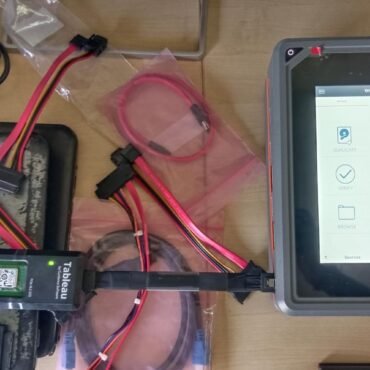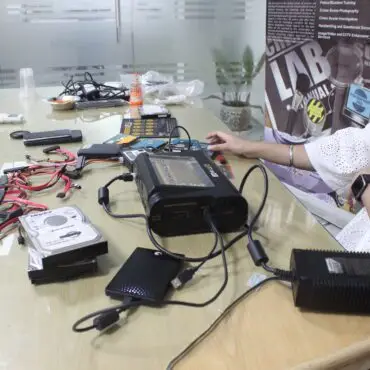Data Recovery Demystified: Techniques Experts Use to Retrieve Lost Files
Introduction
In today’s digital environment, information is as precious as money. From cherished family snaps to vital business databases, every byte is significant. However, even with improved technology, data loss is perhaps one of the most feared situations for both individuals and businesses. Whether it’s an unintended loss of a project file, hard drive corruption, or a disaster RAID failure in a data center, unplanned data inaccessibility can bring panic and disruption.
But there’s hope. Data recovery specialists employ advanced techniques and forensic-grade tools to retrieve files that appear permanently gone. These methods, ranging from simple undelete operations to cleanroom-based physical recovery, are designed to maximize the chances of retrieval while minimizing further damage.
In this long-form blog, we’ll demystify the science of data recovery, exploring the techniques experts use to retrieve lost files, and why professional help is often the safest bet when digital disasters strike.
Understanding Data Loss: How Files Go Missing
To appreciate data recovery methods, it’s vital to understand how files are lost in the first place. Contrary to popular belief, data loss doesn’t always mean destruction—it often means inaccessibility.
1. Accidental Deletion
When a file is deleted on Windows or Mac, it doesn’t vanish immediately. Instead, the system marks its storage location as “available space.” Until new data overwrites this area, the original file remains recoverable. This is why experts advise to stop using a device immediately after deletion.
2. Hardware Malfunction
Hard drives, SSDs, USBs, and memory cards have finite lifespans. Moving parts in HDDs can fail, while SSDs degrade over time due to limited write cycles. A malfunctioning device might appear “dead,” but often, the data inside remains intact until physically destroyed.
3. File System Corruption
File systems (NTFS, FAT32, exFAT, APFS, ext4, etc.) act as maps that tell the operating system where data is stored. If the map is damaged due to crashes, improper shutdowns, or power surges, the data exists but becomes inaccessible.
4. Malware and Ransomware Attacks
Malicious programs can encrypt, hide, or delete files. Ransomware, for instance, locks access to data until payment is made. Recovery in such cases requires specialized decryption or restoring data from backups.
5. Physical Damage
Floods, fires, drops, and even natural wear-and-tear can damage storage media. While these scenarios seem hopeless, professional labs use cleanroom environments to repair and retrieve data.
Techniques Experts Use for Data Recovery
1. Deleted File Recovery
Deleted files are the most common data loss scenario, and fortunately, also among the easiest to recover—provided no overwriting has occurred.
-
How experts do it:
Specialized tools bypass the operating system and perform a low-level scan of the storage medium. These tools identify data remnants by recognizing file signatures (headers and footers unique to file types like JPG, DOCX, or MP4).
-
Challenges:
-
Tools Used: EnCase, R-Studio, Recuva, FTK Imager.
-
Example Case: A photographer accidentally deletes a folder of wedding photos. Using recovery software, experts restore 95% of images intact because the drive wasn’t used afterward.
2. Partition Recovery
Partitions are logical divisions within a storage device. Losing a partition due to accidental formatting, improper resizing, or system crashes can make an entire drive appear missing.
-
How experts do it:
Recovery professionals rebuild damaged or missing partition tables, reconstruct file system structures, and restore access to data.
-
Tools Used: TestDisk, EaseUS Partition Recovery.
-
Scenario Example: A laptop with dual partitions (C: and D:) suddenly loses access to D:. By rebuilding the Master Boot Record (MBR), specialists restore the partition without affecting existing files.
3. Formatted Drive Recovery
Formatting erases the file system, effectively “resetting” the drive. However, unless a full format was done (which overwrites data with zeros), most files remain retrievable.
-
How experts do it:
By scanning sectors for remnants of old file systems, recovery software reconstructs the previous data layout.
-
Challenges:
-
Quick format = higher recovery chances.
-
Full format = extremely difficult recovery, often impossible.
-
Real-life example: A student accidentally formats a USB drive containing a thesis. Since it was a quick format, experts successfully restore the full document.
4. RAW Drive Recovery
A RAW drive means the system cannot recognize its file system. Common causes include virus attacks, corruption, or improper ejection.
-
How experts do it:
Specialists perform sector-level analysis, bypassing the corrupted file system. They then extract files directly from raw blocks of data.
-
Tools Used: Stellar Data Recovery, Disk Drill, R-Studio.
-
Case Scenario: An external HDD plugged into multiple computers suddenly shows up as RAW. Experts recover data by ignoring file system errors and scanning for recoverable structures.
5. Damaged File Repair
Sometimes, files themselves are damaged during storage or transfer. Even if recovery is successful, the files might be corrupted or unusable.
-
How experts do it:
Repair tools reconstruct damaged file headers, metadata, and missing data streams. For video and image files, hex editors and format-specific repair software are used.
-
Common cases:
-
Tools Used: JPEG Repair Toolkit, Stellar File Repair, Hex editors.
6. SSD Data Recovery
SSDs are faster and more reliable than HDDs, but recovery from them is much more complex.
7. Physical Data Recovery
Physical failures are the most challenging type of data loss.
-
How experts do it:
-
Devices are opened in ISO-certified cleanroom labs (dust-free environments to prevent platter damage).
-
Faulty parts like read/write heads, PCBs, or firmware chips are repaired or replaced.
-
A clone of the drive is created before logical recovery begins.
-
Examples:
This type of recovery requires high skill, precision tools, and controlled lab conditions.
8. RAID Data Recovery
Enterprises often use RAID (Redundant Array of Independent Disks) for redundancy and performance. When RAID fails, recovery is highly technical.
9. Cloud Data Recovery
As more users rely on cloud platforms, recovery methods have expanded.
Preventive Measures Against Data Loss
While recovery is possible, it is never guaranteed. Prevention remains the best strategy:
-
Regular Backups – Follow the 3-2-1 rule (3 copies, 2 media types, 1 offsite/cloud).
-
Device Care – Avoid drops, moisture, and power surges.
-
Safe Practices – Always eject external drives properly.
-
Antivirus Protection – Protect against ransomware and malware.
-
Drive Health Monitoring – Use tools like CrystalDiskInfo or SMART analysis.
Why Professional Help Matters
Many people attempt DIY recovery, but this often reduces the chances of successful retrieval. Professionals are equipped with:
-
Forensic Soundness – Ensuring the integrity of data, especially for legal use.
-
Specialized Tools – Access to hardware imagers, cleanrooms, and chip-off recovery.
-
Experience – Expertise to handle different scenarios without causing irreversible loss.
In legal or corporate cases, only expert recovery ensures admissibility in court and compliance with regulations.
Conclusion
Data recovery is not magic, but a science built on a deep understanding of storage technologies, file systems, and repair techniques. From restoring deleted files to reconstructing broken RAID arrays, experts use a variety of tools and methodologies tailored to each unique situation.
The next time disaster strikes, remember: your lost files may not be lost forever. With the right professional assistance, recovery is often possible. However, the most effective strategy against data loss remains proactive backup and prevention.





Post comments (0)